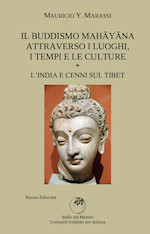There are very few people with the kind of personal commitment to Buddhism and the vast background in art history that are needed to understand Buddhist art. I regret to say that I am not among those few. I have been studying and practicing Buddhism for many years, but I began exploring how Buddhism has expressed itself in art only two-three years ago. I was – and still am — afraid that I would be unable to do justice to this vast theme. Buddhist art encompasses twenty-five centuries of history in much of the world, in countries as far apart as Afghanistan and Japan. How can one have the presumption to master it?
However, last year, my Christian brother, father Carlo de Filippi, asked me to take up this challenge, and, recklessly, I accepted. It is now time to keep my word.
Perhaps I should conclude this brief preface with a warning. I will look at Buddhist art not as a historian, but as a Buddhist. Style here will be examined as a tool for religious expression only. I will search for the ways through which Buddhist art was able – when it was – to transmit the message of the Buddha silent and clear.
This approach is of course not new. Painting, carving, and writing, in prose and rhyme, are acts complete in themselves but they are vehicles for meaning at the same time. It does not matter what kind of meaning is being transmitted. Meaning can belong to the sphere of the profane but also to that of the sacred and the transcendental. Art speaks to the spirit and the spirit is nourished by the perception “of things not seen” 1. Art can be a bridge between the invisible and the spirit, between understanding and the incomprehensible.
| « Summary | Early Buddhism » |
Se volete, lasciate un commento.
You must be logged in to post a comment.







